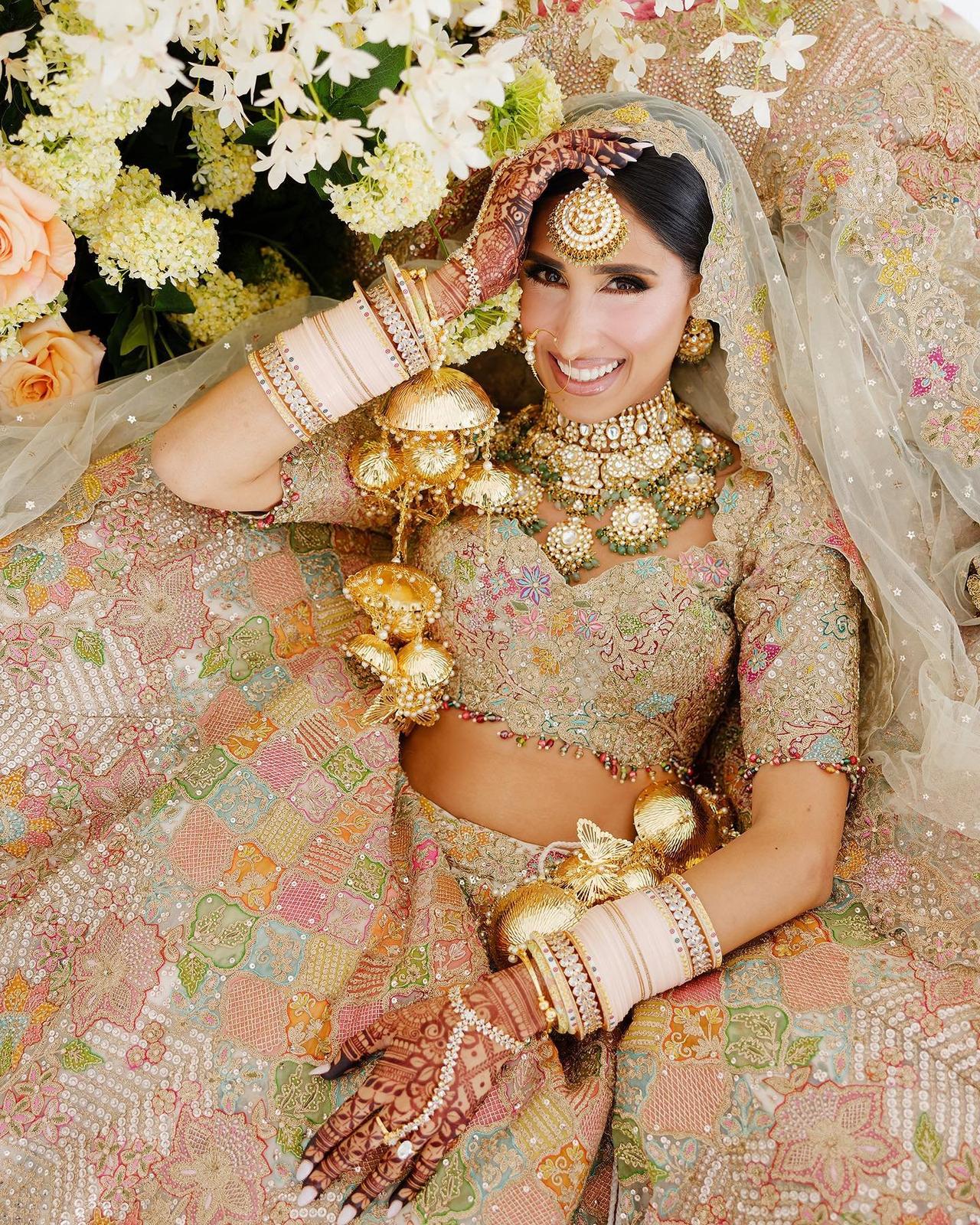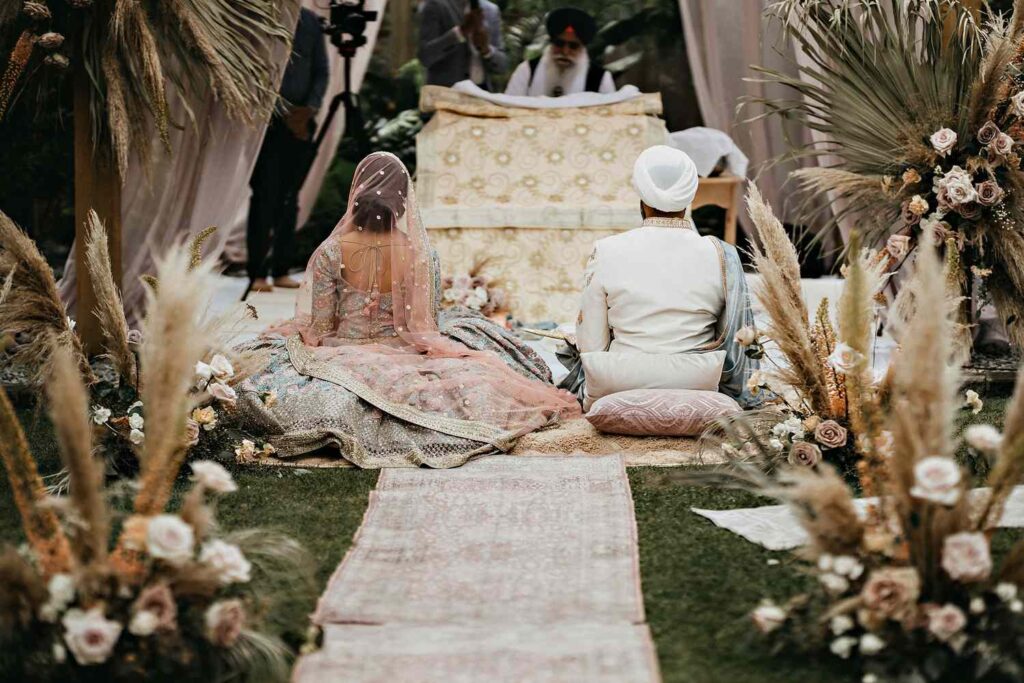Punjabi Wedding Rituals in Punjab
Punjabi weddings are vibrant, colorful celebrations filled with rich traditions, cultural significance, and joyous ceremonies. These weddings are a perfect blend of spiritual and social festivities that often last for several days. Each ritual embodies the values of love, respect, and union, making them a memorable experience for both families and guests. In this detailed step-by-step guide, we’ll navigate through the essential rituals of a Punjabi wedding, providing insights into their meanings and significance.
Sequence of a Punjabi Wedding Ceremony
Pre-Wedding Rituals: Before the wedding day arrives, many essential rites and rituals take place. Here are some key pre-wedding customs:
1. Roka Ceremony
The Roka ceremony is the formal engagement that marks the beginning of a relationship between the bride’s and groom’s families. During this event, the families meet, exchange gifts, and bless the couple. It serves as an official announcement of the couple’s intent to marry.
2. Sangeet
The Sangeet night is a fun-filled event where family and friends gather to celebrate through music and dance. Traditionally, evening festivities include performances by loved ones, where they’ll often incorporate playful dances that showcase the couple’s journey. This event is meant to foster unity among both families and set a joyous tone for the upcoming wedding.
3. Mehndi Ceremony
The Mehndi ceremony usually takes place a day or two before the wedding. The bride’s hands and feet are adorned with intricate henna designs that symbolize love and prosperity. Female relatives of the bride gather to apply mehndi while singing traditional songs. The darker the color of the henna, the more love the bride will receive from her in-laws, according to tradition.
4. Choora Ceremony (Wedding Rituals for Bride)
In this ritual, the maternal uncle and aunt of the bride present her with a set of red and white bangles known as ‘Choora.’ The bride wears these bangles as a symbol of her marital status. The Choora is often worn for several weeks after the wedding as a sign of her new life.
5. Kalira Ceremony (Wedding Rituals for Bride)
At the Kalira ceremony, the bride’s friends tie Kaliras, which are decorative ornaments usually made of ‘chudi’ (bangles) and some metallic components, to the Chura. It is believed that when the bride shakes the Kalira, it is a sign that she is showering blessings of love and good fortune upon her unmarried friends.
Wedding Day Rituals: As the wedding day arrives, a sequence of rituals set the stage for the grand ceremony. Punjabi weddings lean heavily on customs filled with cultural richness.
6. Baraat
The Baraat is an energetic procession led by the groom and his family to the bride’s house. This joyous parade typically includes music, dancing, and sometimes even a horse or vintage car for the groom. As they approach the venue, guests shower the baraat with flower petals, signifying happiness and welcoming.
7. Milni Ceremony
As the groom arrives at the wedding venue, the Milni ceremony takes place. This marks the introduction of the groom’s family to the bride’s family. Elder male members embrace, signifying the union of both families and the start of the relations.
8. Kanyadaan
The Kanyadaan is a heartfelt event where the bride’s father gives her away to the groom. It symbolizes the father’s acceptance of the groom as the protector of his daughter’s future. The bride’s hands are placed into the groom’s hands, often wrapped in a traditional cloth called ‘Dupatta.’
9. Pheras
The most significant ritual in a Punjabi wedding is the Pheras or the ‘laavaan.’ The couple circles around the Guru Granth Sahib (the Sikh holy scripture) four times, making vows of love, respect, and commitment to each other with each round. This is a sacred promise that binds them not just legally, but spiritually.
10. Shadi (Marriage)
After the Pheras, priests or family elders often conduct a brief marriage ceremony, often incorporating religious verses and prayers that invoke blessings for the couple’s future.
Post-Wedding Rituals: After the wedding ceremony, several rituals enhance the transition into married life. These customs help merge two families and establish the bride and groom’s new roles.
11. Vidaai
The Vidaai ritual is an emotional farewell for the bride as she leaves her parental home and heads to her in-laws’ home. The bride is often seen crying, symbolizing her departure and the beginning of her new journey with her spouse.
12. Gharoli
Upon arrival with the groom’s family, the bride undergoes the Gharoli ceremony, where she is welcomed with warmth and blessings. The bride is presented with gifts, and rituals assure her comfort and happiness in her new home.
13. Reception
The wedding festivities typically conclude with a grand reception, celebrating the union of the couple with extended family and friends. This event is filled with delicious food, dancing, and merriment, marking the successful culmination of different ceremonies.
Punjabi weddings are not just events; they are a fusion of culture, love, and community spirit that rejoices in the union of two families. Each ritual serves a purpose, whether it’s creating bonds, offering blessings, or simply celebrating love in its purest form. By recognizing and honoring these rituals, participants create lasting memories and strengthen familial ties, ensuring that the celebration is as joyous as it is meaningful.
For more such Articles, visit https://ethnicreation.in/why-is-bridal-chooda-dipped-in-milk/



